Neanderthals on the Lower Danube: Middle Palaeolithic evidence in the Danube Gorges of the Balkans
- PMID: 35874300
- PMCID: PMC9291232
- DOI: 10.1002/jqs.3354
Neanderthals on the Lower Danube: Middle Palaeolithic evidence in the Danube Gorges of the Balkans
Abstract
The article presents evidence about the Middle Palaeolithic and Middle to Upper Palaeolithic transition interval in the karst area of the Danube Gorges in the Lower Danube Basin. We review the extant data and present new evidence from two recently investigated sites found on the Serbian side of the Danube River - Tabula Traiana and Dubočka-Kozja caves. The two sites have yielded layers dating to both the Middle and Upper Palaeolithic and have been investigated by the application of modern standards of excavation and recovery along with a suite of state-of-the-art analytical procedures. The presentation focuses on micromorphological analyses of the caves' sediments, characterisation of cryptotephra, a suite of new radiometric dates (accelerator mass spectrometry and optically stimulated luminescence) as well as proteomics (zooarchaeology by mass spectrometry) and stable isotope data in discerning patterns of human occupation of these locales over the long term.
Keywords: Danube Gorges; OSL dating; Palaeolithic; ZooMS; cryptotephra; radiocarbon dating.
© 2021 The Authors. Journal of Quaternary Science Published by John Wiley & Sons, Ltd.
Figures
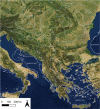





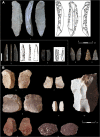
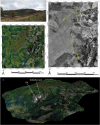
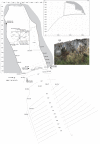

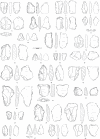
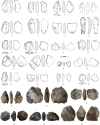



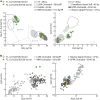
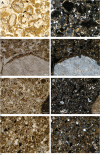

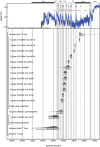
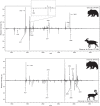
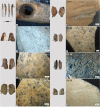
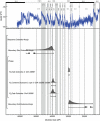
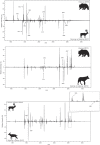

Similar articles
-
Revisiting the Middle and Upper Palaeolithic archaeology of Gruta do Caldeirão (Tomar, Portugal).PLoS One. 2021 Oct 27;16(10):e0259089. doi: 10.1371/journal.pone.0259089. eCollection 2021. PLoS One. 2021. PMID: 34705887 Free PMC article.
-
New evidence of early Neanderthal disappearance in the Iberian Peninsula.J Hum Evol. 2014 Oct;75:16-27. doi: 10.1016/j.jhevol.2014.06.002. Epub 2014 Jul 10. J Hum Evol. 2014. PMID: 25016565
-
Large-scale application of palaeoproteomics (Zooarchaeology by Mass Spectrometry; ZooMS) in two Palaeolithic faunal assemblages from China.Proc Biol Sci. 2023 Oct 25;290(2009):20231129. doi: 10.1098/rspb.2023.1129. Epub 2023 Oct 25. Proc Biol Sci. 2023. PMID: 37876197 Free PMC article.
-
New electron spin resonance (ESR) ages from Geißenklösterle Cave: A chronological study of the Middle and early Upper Paleolithic layers.J Hum Evol. 2019 Aug;133:133-145. doi: 10.1016/j.jhevol.2019.05.014. Epub 2019 Jul 1. J Hum Evol. 2019. PMID: 31358177
-
A 14C chronology for the Middle to Upper Palaeolithic transition at Bacho Kiro Cave, Bulgaria.Nat Ecol Evol. 2020 Jun;4(6):794-801. doi: 10.1038/s41559-020-1136-3. Epub 2020 May 11. Nat Ecol Evol. 2020. PMID: 32393865
Cited by
-
Aurignacian dynamics in Southeastern Europe based on spatial analysis, sediment geochemistry, raw materials, lithic analysis, and use-wear from Românești-Dumbrăvița.Sci Rep. 2022 Aug 19;12(1):14152. doi: 10.1038/s41598-022-15544-5. Sci Rep. 2022. PMID: 35986053 Free PMC article.
References
-
- Alex B, Mihailović D, Milošević S et al. 2019. Radiocarbon chronology of Middle and Upper Palaeolithic sites in Serbia. Journal of Archaeological Science: Reports 25: 266–279.
-
- Aitken MJ. 1985. Thermoluminescence Dating. Academic Press: London.
-
- Anghelinu M, Niță L, Sitlivy V et al. 2012. Looking around Peştera Cu Oase: The beginnings of Upper Paleolithic in Romania. Quaternary International 274: 136–157.
-
- Bae CJ, Douka K, Petraglia MD. 2017. On the origin of modern humans: Asian perspectives. Science 358: eaai9067. - PubMed
-
- Băltean IC. 2011. The Palaeolithic in Banat. In The Prehistory of Banat, Tasić N, Drașovean F (eds). The Publishing House of the Romanian Academy: Bucharest; 21–76.
LinkOut - more resources
Full Text Sources
